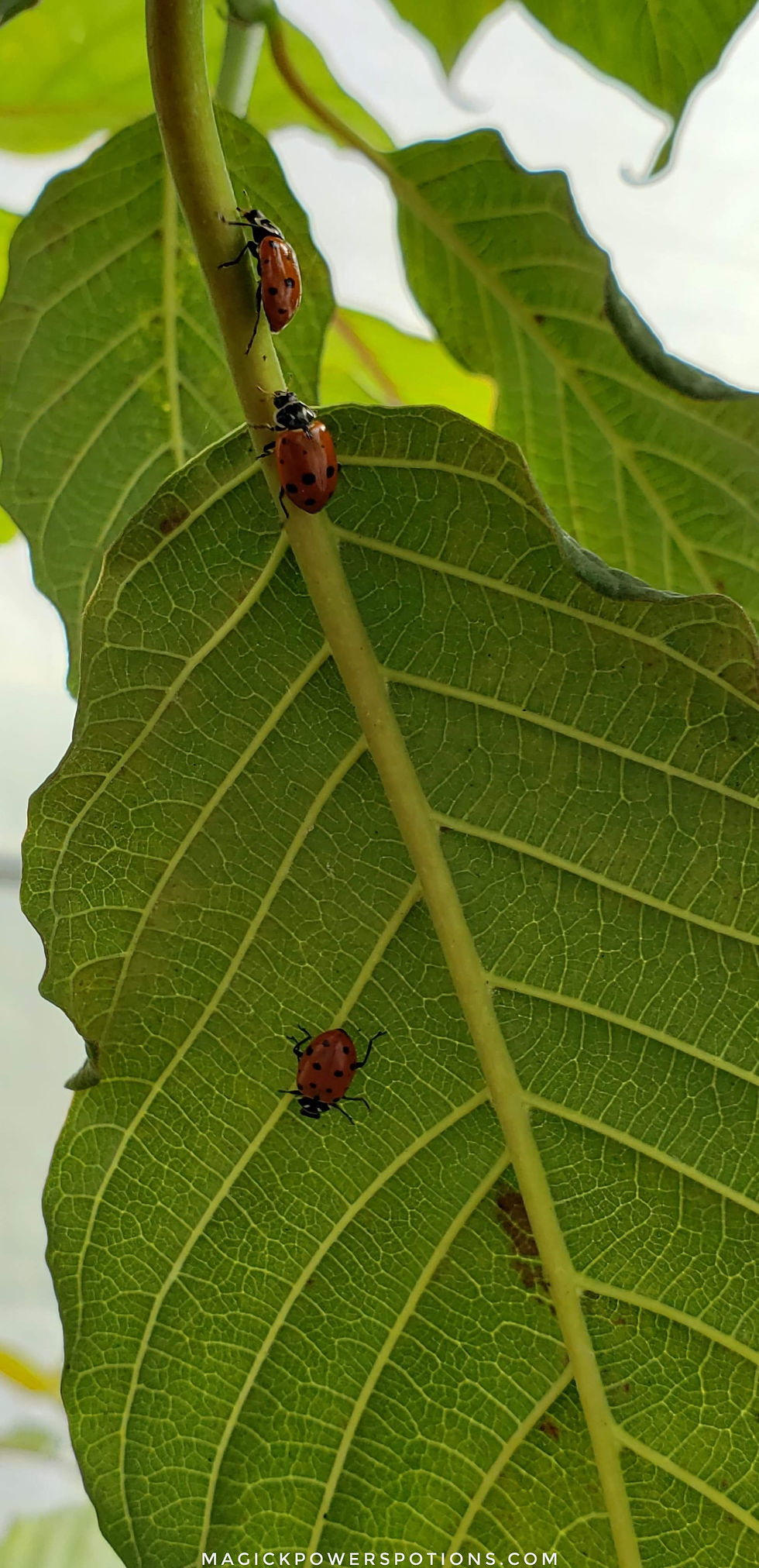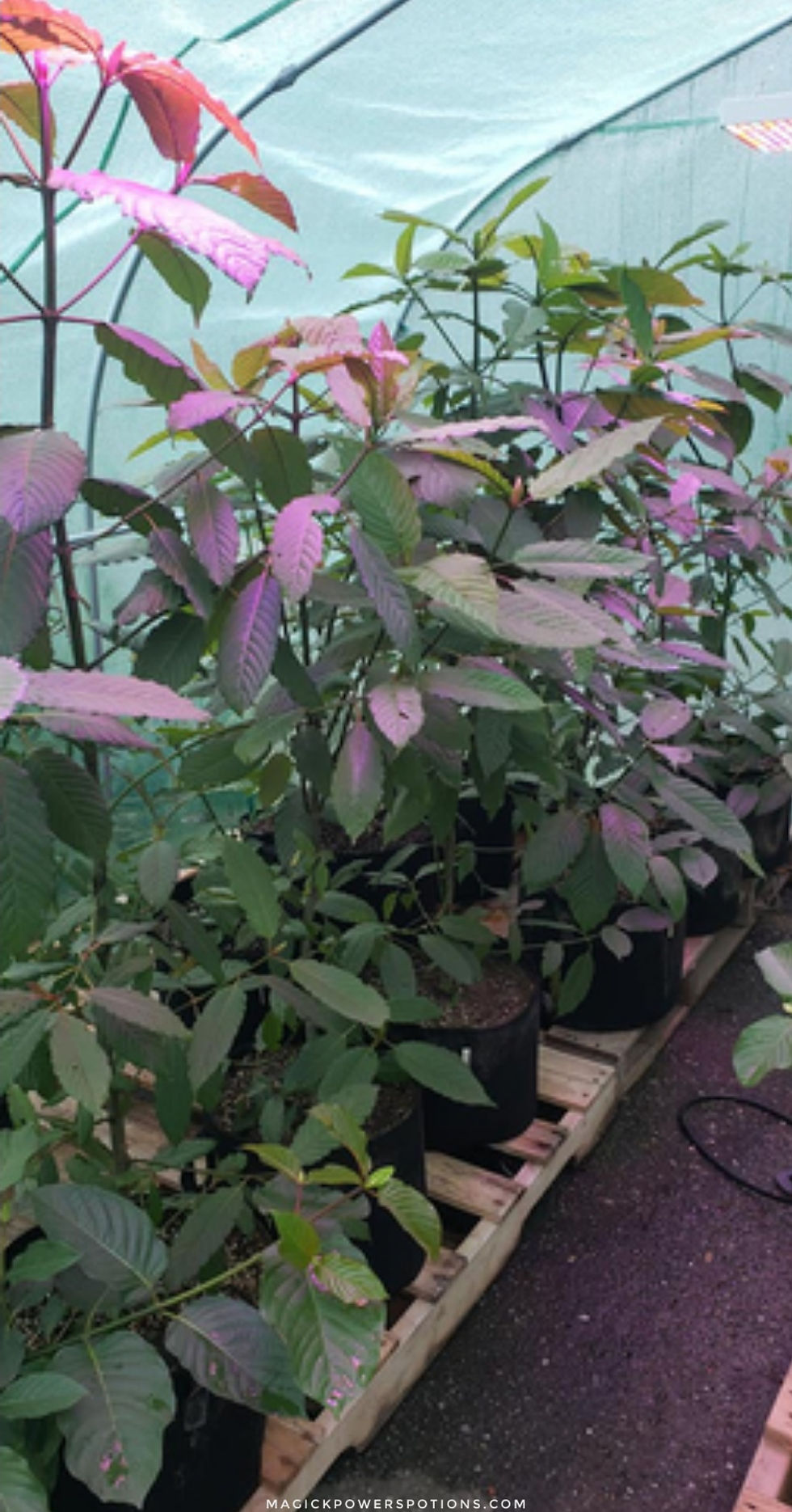Oregon Kratom Harvest
- Magick Powers

- Sep 14, 2019
- 6 min read
Updated: Jun 13, 2020
Our latest success story takes place in Gold Beach, Oregon, where master gardener Richard "Greenking" Atchley grows and harvests usable quantities of high quality, alkaloid-rich kratom using genetics available through Magick Powers Potions' Borneo Rainforest line.

Atchley has been growing kratom for a little less than a year, and the experienced gardener has become pretty good at it. After cultivating cannabis for many years as a hobbyist for personal use, he aimed his green thumb straight at the bullseye of mitragyna speciosa with excellent results.
"My biggest surprise is they grew nine feet this year," says Atchley, who ordered his plants as young seedlings. "From my studies, I read to expect three feet per year, not nine!"
Most kratom grown in the U.S. and written about online are clones cultivated in a hobbyist capacity, and Atchley is growing seed-sown trees for agricultural applications, so his experience is different from most.

"Clones are basically branches of other trees," says David Winkler, cultivation and grow systems expert for Magick Powers Potions. "Growth rates for clones are different than intact trees. They don't have the same biological imperative to grow huge and massive as quickly, because there's no tap root thrusting down and no huge push from a trunk to shoot up toward the sky."
Enthusiasts have been cultivating cloned branches in America for the last few decades, but without the kind of practical results needed to inspire major advances in American kratom agriculture.

However, recent exploration into new genetically diverse seed-sown lines has yielded exciting developments for potential kratom agribusiness.
"Persistent myths long barred the way to developing infrastructure for American kratom," says Cornelia Llama, resident hedgewitch for Magick Powers Potions and advocate for plant based medical freedom. "The biggest myth claims it takes years, even decades, for kratom trees to produce beneficial alkaloids. But it turns out good trees can reach worthy alkaloid levels at less than a year of age. That's completely contrary to what people have been saying for years."
Atchley had a hand in settling the harvest maturity myth in August when he took samples from six of his young trees and sent the dried leaves to be tested at Wonderland Labs, which revealed median alkaloid levels of 1.19% mitragynine and .004% 7hydroxymitragynine at 11 months of age.

"We were very pleased to learn of the lab results," says Winkler. "We've known for a long time that our plants can produce alkaloids young, but it's nice to see it on paper. The samples were collected by a third party and sent by a third party to another third-party testing facility. It gives good reason to look beyond old common clone lines. There are more options now. And we can create new lines more suitable to North America."
"We also anticipate these numbers increasing," says Llama, referring to alkaloid levels. "The plants in this scenario weren't even a year old at the time of testing. What's so important about this is it shatters the myths that kratom takes years to produce alkaloids, and that good kratom cannot be cultivated in the United States. This proves unequivocally that neither of those things are true."
This paves the way for seed-sown genetic diversity to take its place on the newly emerging frontier of American kratom agribusiness.
With the door to new genetics opened, people like Atchley are becoming the vanguards for a new American revolution. He is living proof that alkaloid-rich kratom can be cultivated in the U.S. in non-tropical regions using a greenhouse set up and the right genetics.

Plant power
"My mom was a huge plant person, and I think that's where my love for plants comes from," says Atchley, a longtime plant lover, whose passion and dedication to plant medicine has him feeling right at home in his greenhouse. "I have tons of different plants, but my kratom trees are by far my favorites. I've also been growing marijuana for many years, but the kratom trees are my absolute prize possessions. We are very lucky here in Oregon!"
Atchley's kratom greenhouse is 10x20x8.5 feet, set atop his seaside bluff property in Gold Beach at an altitude of 174 feet above sea level. For the first year of life he uses Magick Powers Potions' recommended 24/7/365 lighting schedule. He has also used a radiant heater in Oregon's cold winter weather to keep the greenhouse above freezing. He prefers Fox Farm soil, nutrients and soil amendments, and gives his crop lots of care and attention.

"My trees have been babied for a year," laughs Atchley. "They get extra lights 24/7/365, even during the day. I found they like a water shower a few times a day, so I installed a mist system, and they absolutely love it! I am constantly picking at them and cleaning them, loving them, talking to them, petting them... I'm kinda weird about my trees. I think they know I love them!"
Atchley's wife Jo gives a little chuckle at this proclamation, but supports his botanical love affair with good natured encouragement. "I love that it's his hobby," she says. "One night when we lived at our old house, about 50 feet from the ocean, there were 70+ MPH winds. I stayed out there on a cot with him to keep an eye on everything."
Fortunately, Atchley's new place is perfect for growing kratom with terraced land and big block walls to hold the heat of the day. Huge orange trees ladened with fruit and other warm weather loving species thrive there in spite of the cold and rainy Oregon winters.
"So far the kratom loves it here and trees are getting bigger every day," says Atchley with a low whistle. "The size, man. These trees can grow! That's been a huge issue to have to upgrade to larger greenhouses. My pro tip is to buy the TALLEST greenhouse you can afford and get that to start with."
Atchley also makes sure his kratom trees' root balls have plenty of room, an essential requirement for agricultural applications. Now, with some at nine feet high, they are growing both inside and outside the greenhouse in 55 gallon drums, and some are being prepped to be put in the ground.
"The ones we've got outside are loving the Oregon rain," says Atchley. "After 24 hours of rain, they got new growth everywhere, just popping open. Blew my mind!"
Atchley tested the pH of the rainwater and found it was 7.2, which is high for mitragyna speciosa. Kratom likes more acidic environment, so Atchley makes sure his soil pH stays between 5.5 and 6, and this keeps the trees happy.
Like any outdoor or greenhouse crop, Atchley sometimes deals with pests, and finds a good hosing off works wonders in the greenhouse, which doesn't get the Oregon rain wash like the outdoor plants do. "We sometimes get the little aphids and the tiny little flying ones that lay eggs in your soil," says Atchley. "And earwigs love kratom. I always know if they eat it because they poop on it and it grosses me out!"
Atchley uses mosquito dunks in his water once a year, and surrounds the outside perimeter of his greenhouse with diatomaceous earth a couple times a year. He also releases lady bugs and mantises to control the aphid population.

"Our harvests have been excellent so far," says Atchley. "It's amazing how many leaves there are and how fast they are growing back! And we know they're only going to get stronger and more plentiful over time."
Atchley uses simple home appliances to grind his kratom, and says he always has a lot more green cure than red cure. "The red cure is tricky," he confesses. "We're always working on improving our curing methods. We're learning as we go. But our green cure is fire."

A widespread misunderstanding in the kratom community has led to people thinking red kratom is made from red leaves, and green kratom from green leaves, when in fact it is the curing methods that determine the color of the finished powder as well as the amount of oxidation and its related energetic effects.
The leaves on Atchley's trees change colors, and can grow in anywhere from light green with a white vein to dark green with red veins, and various shades in between. The color of the powder is not, in fact, dependent upon the color of the leaf prior to harvest.
Atchley uses a quick dry for his green cure, pressing leaves between cardboard to help wick away any moisture. For a white cure, he dries in cool darkness over the course of several days, and for a red cure he experiments with varying levels of light, heat and humidity ---- all oxidizing factors known to convert mitragynine into its oxidized analog 7hydroxymitragynine.

As a pioneer of American kratom, Atchley provides a successful working model for the family-size kratom farm, and proves high quality, alkaloid rich kratom can be grown in non-tropical regions of America with a greenhouse, plenty of hard work, and high quality plants.
"MY BEST ADVICE IS JUST DO IT!!!!" says Atchley. "Don't be scared because someone told you it was hard! Its easier than you think it will be, I promise! Also if you're going buy a greenhouse to grow just one tree, you're going be wasting a lot of space, so buy 10-15 trees over the course of a year, and remember they will get bigger so don't buy too many."
You can join Atchley and others with likeminded visions by growing your own genetically diverse seed-sown kratom in the United States of America. Get trees like Atchley's here.
A deeper look inside Atchley's kratom greenhouse
















Richard is the most amazing guy I’ve ever met. He has taught me so much about growing these awesome plants and I love every single video he has made Since his trees were tiny. Here’s mine at 2 months! This was a great article! ❤️
Great read! Cant wait to grow some canadian genetics 😎 maybe we can find a way to overwinter and kep her happy!! 🤷♂️😎🥰
This article, information and pictures are awesome. And I am a scholar of Richard's. He is amazing..I often wonder was he born in Indonesia lol
My heart soars reading this!!! I hope it helps encourage EVERYONE to give it a chance!!! You can do it!!!